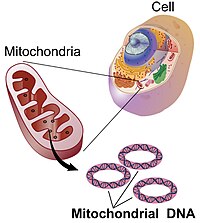
Photo from wikipedia
A NiCo2O4-Au composite was fabricated following the calcination-reduction method and testified to exhibit the intrinsic high peroxidase- and oxidase-like activities. The composite could activate a low level of H2O2 (100… Click to show full abstract
A NiCo2O4-Au composite was fabricated following the calcination-reduction method and testified to exhibit the intrinsic high peroxidase- and oxidase-like activities. The composite could activate a low level of H2O2 (100 μM) to kill E. coli and S. aureus. NiCo2O4-Au composite could be easily separated by an external magnet from the media and reused several times. NiCo2O4-Au composite could also effectively damage the existing biofilms and prevent the formation of new biofilms. The electron spin resonance tests showed that NiCo2O4-Au composite catalyzed H2O2 into reactive oxygen species (ROS), mainly including OH, O2-, and 1O2; while the oxidase-like activity of NiCo2O4-Au also stemmed from the ROS formation in the absence of H2O2. The radical trapping experiment confirmed that OH and 1O2 were the main radicals in the antibacterial process for NiCo2O4-Au in the presence of H2O2. A NiCo2O4-Au based Band-Aid was also designed, which exhibited high anti-infective and wound-healing properties. This study has demonstrated that NiCo2O4-Au composite can be a promising antibacterial agent in environmental and clinical applications.
Journal Title: Journal of hazardous materials
Year Published: 2021
Link to full text (if available)
Share on Social Media: Sign Up to like & get
recommendations!